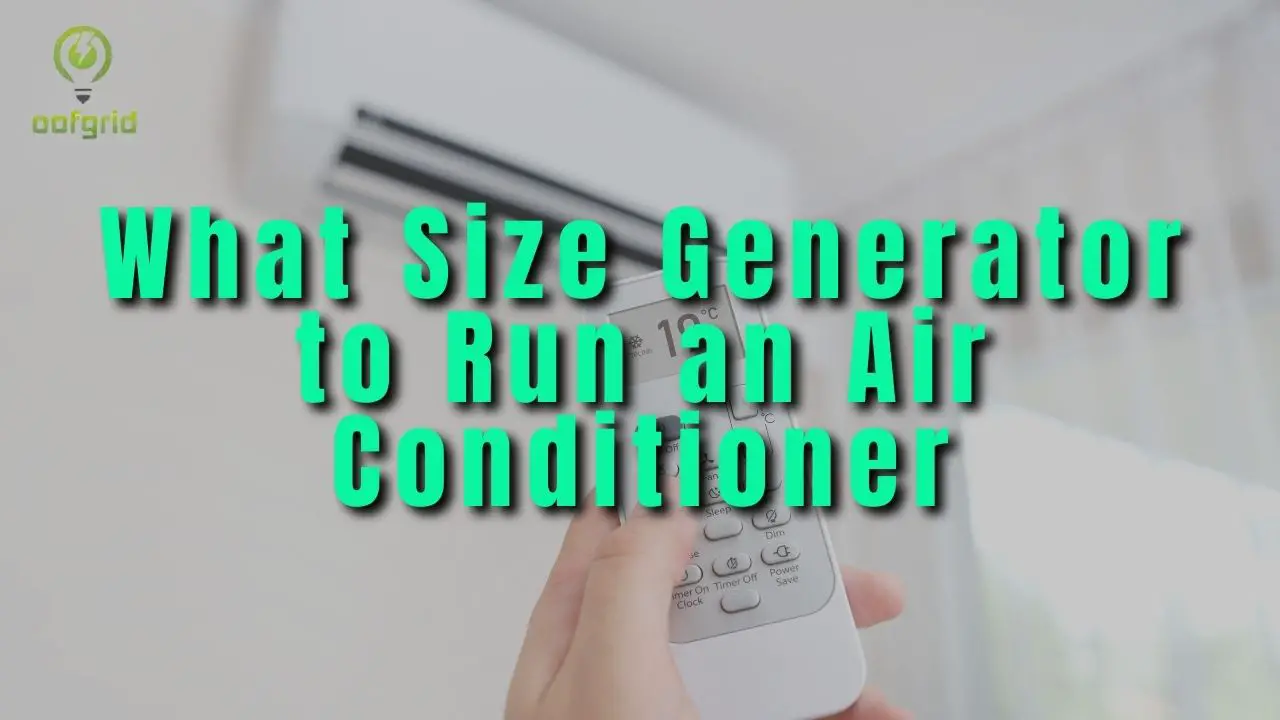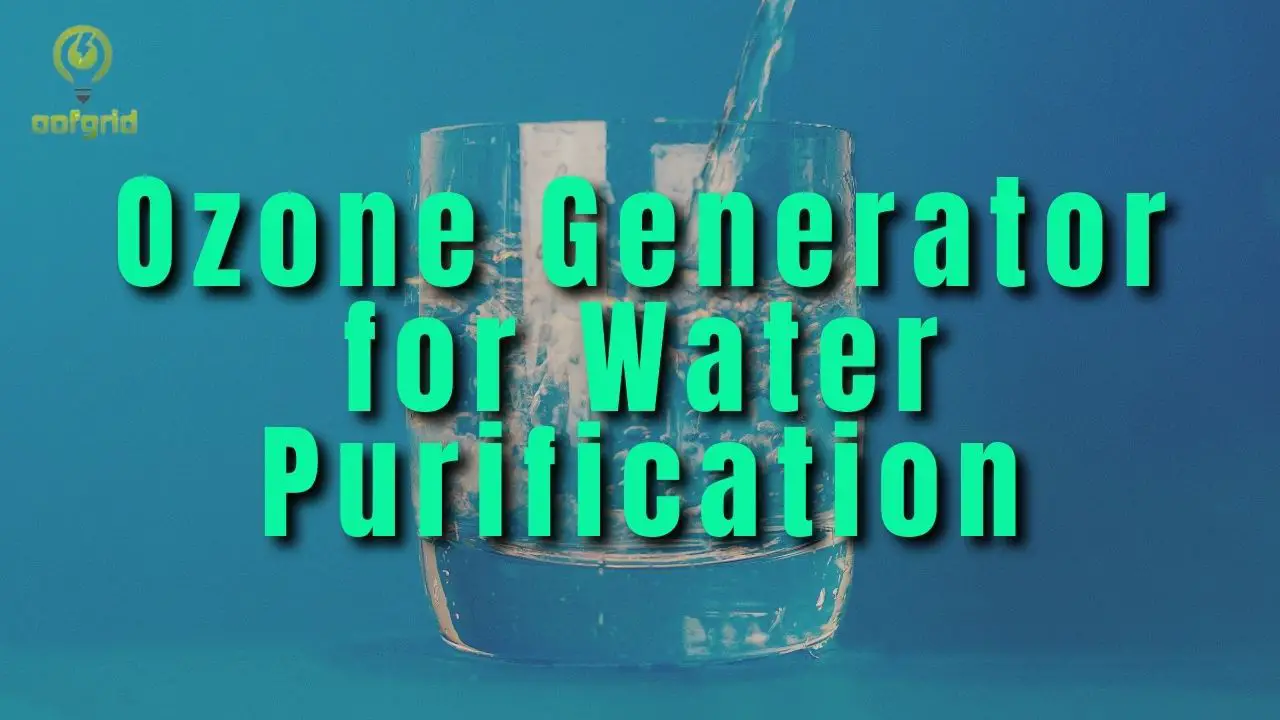Utility companies are enforcing planned power outages more than ever these days. Why? Simply to reduce the risk of fires. While this is, of course, essential for the welfare of everyone, it might be leaving you without water for substantial lengths of time.
For some of you, it might have been a shock that a power outage leaves you dry. So, let’s just quickly explain why this is happening.
The reason you’re left without water when the power cuts out is simple. Your well and the submersible water pump that allows your home to have running water rely on electricity. Make sense? Good! We’ll move on then.
To combat this unhelpful fact of life, you are probably considering buying a portable generator to ensure you have water while the mains is cut off. However, you can’t just go out to the store and grab one off the shelves. There are things you have to consider first — yup, it can get confusing, but we’re here to help.
Although we are mainly going to be looking at the size requirements here, we will take a look into the other necessary considerations too.
Are you ready to get started? We thought so! Let’s jump right into the details.
Contents
What Size Generator Do Well Pumps Need?
The first thing we need to mention right away is that you should not guess. Don’t assume that a 1 HP well pump needs a 1000-watt generator. It doesn’t work like that (although it would be a lot simpler if it did, we agree with you there!).
All electric motors need more starting power than they do to continue operation once it is up and running.
So, if you know that you have a 1 HP standard submersible pump, you will need a 4000- to 5000-watt generator. Why? Because even though the pump needs just 1000 watts to run, it requires much more to get it going.
But what if your well pump isn’t a standard model? Well, they have their own set of requirements. You need to ensure you are fully aware of what type and size of pump you have before you run off to buy a generator. Ask yourself the following questions:
- What size is my well pump?
- Is it a standard submersible pump?
- Does it have a constant pressure controller or a VFD (otherwise known as a variable frequency drive)?
Once you can answer those questions confidently, you can proceed far more confidently.
Now, you need to have a look at the labels on your pump equipment. They will have both the voltage and the horsepower of your pump. While there are other bits of information that are important, you only really need to worry about these.
Before heading down to the size charts, remember that a lot of water systems utilize multiple pumps to give your property water. You tend to find that your well pump is used to deposit water into the storage tank.
From there, a booster pump will siphon it, pressurize it, and dispense it ready for your faucets. Depending on your needs, you might decide to power only the booster pump.

However, this won’t work if you need a vast amount of water while the electricity is cut off (or if you want to function normally during this time).
You should also consider the other appliances you want to keep going through power outages. Everything will draw energy from your generator — including lighting, fridges, and cookers if you choose to use your generator for these day-to-day items too.
Include all of these into your calculations. In some cases, you might want to consult your electrician as it can seem quite daunting!
As we briefly mentioned earlier, you need to think about the type of power that your well pump system needs. Usually, domestic dwellings are single-phase 230 volts but yours could be as small as 120 volts (hence why you need to check the label!).
Typically, a small generator (i.e. 2000 watts approximately) will give you enough power for single-phase 120 volt. Medium generators like the Champion 4000 Watt Generator on Amazon, however, will offer up enough power for 120 and 230 single phase.
To know exactly what size generator you should purchase, you need to refer to the charts below. These will help you find the best generator for your pump. Take a look at the headings to see which one you should be referring to.
If charts aren’t really your thing, feel free to use this wattage calculator instead.
The Size Chart — Sizing a Generator to Your Well Pump
| Pump Specs | Generator Rating (Note: this is the minimum rating) | ||||
| HP | KW | Regulated Externally | Regulated Internally | ||
| KW | KVA | KW | KVA | ||
| ½ | 0.37 | 2 | 2.5 | 1.5 | 1.9 |
| ¾ | 0.55 | 3 | 3.8 | 2 | 2.5 |
| 1 | 0.75 | 4 | 5 | 2.5 | 3.1 |
| 1.5 | 1.1 | 5 | 6.25 | 3 | 3.8 |
| 2 | 1.5 | 7.5 | 9.4 | 4 | 5 |
| 3 | 2.2 | 10 | 12.5 | 5 | 6.25 |
| 5 | 3.7 | 15 | 18.75 | 7.5 | 9.4 |
| 7.5 | 5.5 | 20 | 25 | 10 | 12.5 |
| 10 | 7.5 | 30 | 37.5 | 15 | 18.75 |
Of course, you need to bear in mind that this is a general chart. The manufacturer of your specific pump will be able to give you advice based on their complete knowledge of their products.
The Size Chart — Sizing a Generator to Your Well Pump With a Variable Frequency Drive
| MonoDrive and MonoDrive XT Pumps | |
| HP | Generator Wattage Needs |
| ½ | 2000 watts |
| ½ (XT) | 4000 watts |
| ¾ | 3000 watts |
| 1 | 3500 watts |
| 2 (XT) | 5000 watts |
| SubDrive Pumps | |
| SubDrive Number | Generator Wattage Needs |
| 15 | 3500 watts |
| 20 | 5700 watts |
| 30 | 7000 watts |
| 75 | 3500 watts |
| 100 | 5700 watts |
| 150 | 7000 watts |
| 300 | 11000 watts |
| 2W | 6000 watts |
Again, these should only be used as a guide! For specific information on your pumps, you must see advice from the manufacturer.
Other Considerations To Keep In Mind
Now that you’re an expert on sizing generators, it’s time to get stuck into the other considerations!
Make Sure You Have a Good Location For The Generator
Not only are generators somewhat dangerous and are quite a fire hazard, but they are also extremely loud (unless you invest in a really good one like the Westinghouse 9500 ).
You should aim to position your generator within these guidelines:
- It is not in a room connected to your property.
- Noise is reduced as much as possible for your neighbors and your family.
- The building housing the generator has sufficient ventilation to ensure it does not overheat.
- All flammable material (wood, brush, trees, plastic, gas canisters) are cleared from the area.
- Cement or dirt is lining the floor.
- A spark arrestor is fitted.
- It is secure, so it doesn’t topple over.
Ensure You Know Your Electrical Connection Strategy
The final factor you need to consider is your electricity connection strategy.
Poorly connected generators can be the difference between life and death. Not only will it harm you, but it could harm the utility workers at the power grid! And yes, you will be responsible for this. So, with that in mind, you should thoroughly research how to properly connect your generator.
We’ll give you a hint — either plug appliances into the generator directly or install a transfer switch!
Our Top 3 Well Pumps
- American company
- Pump, Deep Well Submersible Pump, 1HP, 110V 60HZ, 33 Gpm, Stainless Steel, for 4" or bigger well, long life
- 2 wire pump with built in control box- DOES NOT require external control box; Industrial grade heavy duty,...
- 207' Head, Stainless
- High-quality Material: The submersible well pump comprises 304 stainless steel and a built-in check valve,...
- Super Large Head & Flow: Powerful flow of the deep well pump can achieve 25 GPM, and the head can reach 341...
- Premium Filtration Mesh: The filtration mesh of a submersible pump is made of stainless steel to filter...
- Excellent Performance: The submersible water well pump is designed with a built-in check valve, which can be...
- Various Application: This submersible pump for a deep well is suitable for extraction from the deep wells for...
Last update on 2025-06-21 / Affiliate links / Images from Amazon Product Advertising API
Our Pick of the best 3 Generators
- 7500 Running Watts and 9500 Peak Watts; Remote Start With Included Key Fob, Electric and Recoil Start; Up to...
- Features Two GFCI (Ground Fault Circuit Interrupter) 5-20R 120V Household Duplex Receptacle and One L14-30R...
- Plug-and-Play: Comes with a Remote Start Key Fob, 12V Battery Charger, Oil, an Oil Funnel, a Tool Kit, and a...
- Powered by a 420cc Westinghouse 4-Stroke OHV Engine Featuring a Long-Lasting Cast Iron Sleeve with Automatic...
- All Westinghouse Portable Generators are Functionally Tested in the Factory and May Contain Minimum Residual...
- Dual Fuel: Operate your 3800-watt portable generator right out of the box on either gasoline or propane, plus...
- Electric Start: Power up the 224cc Champion engine with the handy toggle switch, battery included
- Intelligauge: Keep track of voltage, hertz and run-time hours to easily monitor power output and track...
- Outlets: One 120V 30A RV outlet (TT-30R), one 120V 30A locking outlet (L5-30R) and two 120V 20A household...
- Champion Support: Includes 3-year limited warranty with FREE lifetime technical support from dedicated experts
- This popular model can operate a wide variety of appliances, making it perfect for portable use at home,...
- So quiet, your neighbors will thank you. The EU2200i operates at 48 to 57 dBA, which is less noise than a...
- Add a second EU2200i for additional power. Two identical models can be paralleled with an optional cable or...
- Thanks to our exclusive Eco-Throttle System, the EU2200i offers great fuel efficiency. Runs 4.0 to 9.6 hours...
- Honda's inverter technology means stable, clean power in a smaller, lighter package. The precision of Honda's...
Last update on 2025-06-28 / Affiliate links / Images from Amazon Product Advertising API













